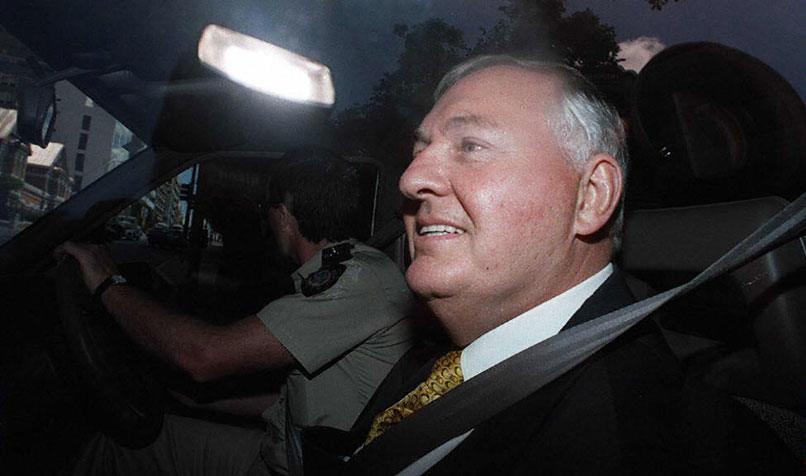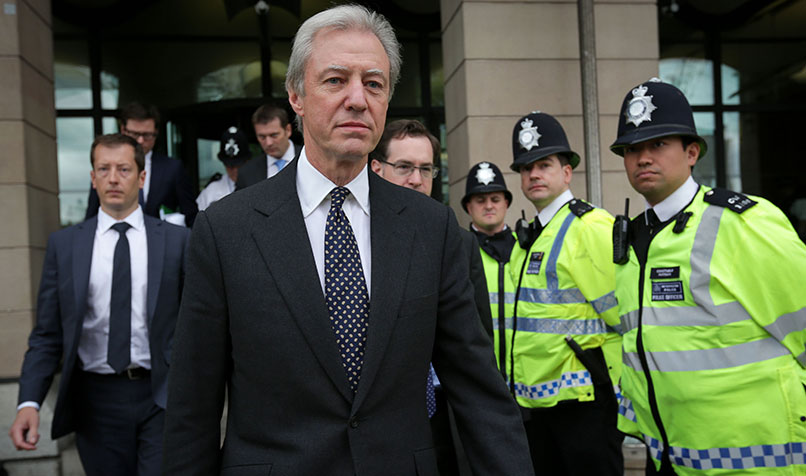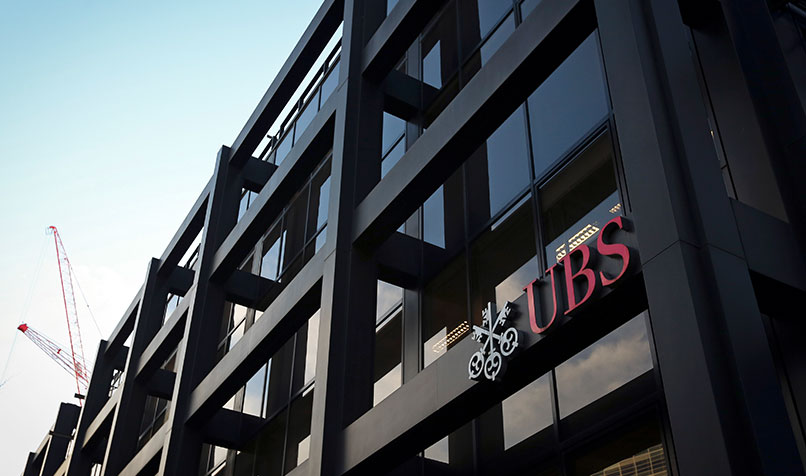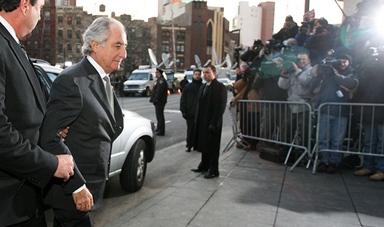Loading component...
At a glance
By: David Walker
Chances are that you think commercial fraud tells us something worrying about our society. From Alan Bond’s late-1980s takeover schemes to Bernie Madoff ’s long-running investment con, fraudsters are not just pilloried but regarded as symptoms of moral decay. Bond came to represent the 1980s “decade of greed” in Australia, Madoff the worst of the pre-2008 financial world.
If you do see fraud this way, Dan Davies has a strange but intriguing message for you. Fraud is a sign of something good in the world of commerce.
No, Davies is neither madman nor crook. He began his career as a Bank of England regulator, achieved internet fame for his D-squared Digest blog and, in recent years, has become a sharp commentator on financial affairs for the likes of the Financial Times and Vanity Fair.
As a banking analyst he had a ringside seat to the 2012 LIBOR scandal, which revealed that bank traders had rigged one of the world’s most important benchmark interest rates.
Davies’ point is that fraud springs from trust. When we see fraud, we should consider whether it is a sign of expanding societal trust rather than moral decay.
How trust breeds fraud

Davies’ mission in his new book, Lying for Money, is to explain just how trust breeds fraud. The complications of the commercial world, he notes, mean we cannot verify everything.
In a low-trust society, people deal with this by restricting their dealings to family members and close friends. In doing so, they restrict fraud risk, but limit their commercial opportunities.
In a high-trust society, however, people can choose to trust each other as a matter of course – and create a commercial world of far greater opportunities. In doing so, they also open the door to more fraud. They create an opportunity for the fraudster. They create a world in which a Bond or a Madoff occasionally tries to fleece everyone.
Davies argues that each society finds a balance point between fraud and trust. Choosing more fraud sounds like a problem. Davies reckons it’s a price worth paying. He does not think it a coincidence that places such as Canada, Australia and the US are known for commercial frauds while, as he puts it, “ship owners in Greece will regularly do multimillion-dollar deals on a handshake”.
Davies calls this the “Canadian Paradox” and sees a simple explanation for it. Canadian investors are used to trusting strangers, while Greek ship owners simply don’t deal with anyone they don’t know well. The two countries have evolved fundamentally different balances between fraud and trust.
Technologies of trust
New techniques can improve the set of possible balance points, of course. In doing so, they change societies. As historians such as Griffith University’s Professor Alan Sangster and the University of Southern California’s Jacob Soll have noted, double-entry bookkeeping was an important step in management of organisations. It lessened the owner’s risk that their employees were skimming a bit off the top.
Double-entry’s arrival in northern Italy in the 1200s enabled the creation of large commercial entities such as the famed Medici Bank.
Double-entry was, in effect, a powerful technology of trust. Once it spread, fraud became harder, and fraudsters within companies were forced to find smarter ways to rip off their bosses. A new balance was found, one in which fraud was fundamentally harder to carry out.
Boom and bust
As Davies tells it, history is full of episodes where societies advanced at the cost of some financial chicanery. (He divides that chicanery into four types – see below.)
One of the first big commercial fraud opportunities sprang from the ancient Greek idea of bottomry, a sort of embryonic insurance contract where a loan was secured against a ship – and the loan did not need repaying if the ship sank. Davies notes that the Athenian orator Demosthenes got his start as a lawyer in marine fraud cases. We even have a speech by Demosthenes recounting a conspiracy to borrow bottomry money from many lenders, scupper the ship, then lie about it.

The target of Demosthenes’ speech was an exercise in the sort of fraud that Davies calls counterfeiting, and it was an inherent problem in the system of bottomry. However, as Davies also notes, bottomry still helped Athens thrive, by spreading the risks inherent in seaborne trade. Fraud was inevitable; eliminating it might have cost Athens its economic power.
Jump forward 2200 years to Victorian England and fraud was rife again, this time in the financing of the railways, finance companies and mines of England’s second industrial revolution. This boom was fuelled by the 1825 legalisation of companies and the creation in 1855 of the modern limited liability company.
Victorian critics of this new legal framework feared a rash of frauds from people misrepresenting companies or milking them for funds. They were right: Davies cites an estimate that as many as one-sixth of all British stock market flotations between 1866 and 1883 were frauds.
Auditing barely existed at the time; Davies notes the accounts of the North Wales Railway Company were passed despite having been written in code to hide unapproved payments to directors. Fraudsters and crooked bankers crop up time and again in the works of fiction writers Charles Dickens and Anthony Trollope, because the newspapers were making such people familiar to authors and readers alike.
Yet here again, fraud was accompanying staggering economic growth, with technological developments that would create not just modern Britain but the modern world.
“The Victorians were under no illusions that the limited liability form was a boon to fraudsters,” Davies writes, “but they wanted it anyway, to keep deepening the pool of investors.”
British legislators did eventually create a new auditing and accounting regime – but not until 1900.
Patching up the holes

As Davies notes, fraud is usually the territory of criminologists; economists rarely venture here. But as Davies told INTHEBLACK, economists who’ve looked at his analysis find it natural to think of fraud and trust as finding a balance point. Those fighting fraud, on the other hand, are more likely to take offence.
Davies says he’s had “a lot of pushback” from accountants, lawyers and other professionals who feel uncomfortable with the idea that we might have to accept even a little bit of fraud in our society. People have a natural tendency to feel that a big fraud shows something deeply wrong with the way we live.
Davies sees the morality-play aspects as overrated. Movies like The Sting depict fraudsters as master psychologists; in real life, they tend to be unimpressive people who find a hole in the system and jump through it. The lives they ruin include their own.
Meanwhile, society patches up the hole in the system as best it can and pushes ahead.
“The controls and technologies of fraud prevention tend to move forward one disaster at a time,” Davies observes.
We continue to trust each other in normal commercial dealings because, mostly, that’s the road to prosperity.
Why fraud is hard to catch
Why is fraud hard to see and hard to prosecute? Lying for Money has a simple answer: too many facts.
Frauds, Dan Davies says, could often be caught very early if someone checked all the facts, but nobody does. It’s too big a job. Even after the fraud is spotted, the problem bedevils prosecutors and turns trials into marathons. “...[T]rials are long and difficult because so many liars are involved. And when a case has a lot of liars, it takes time and evidence to establish that they are lying.
“This state of affairs is actually quite uncommon in the criminal justice system. Most trials only have a couple of liars in the witness box, and the question is a simple one of whether the accused did it or not. In a fraud trial... the defendant is often insisting that no crime was committed at all, that there is an innocent interpretation for everything.”
Dan Davies' four types of fraud
The long firm: A fraudster’s business obtains a large amount of credit from suppliers. It does not intend to repay the funds, but the supplier can’t know that and often needs to sell on credit.
Counterfeiting: A fraudster makes false claims to investors and/or other parties, often with false documents that build trust.
The control fraud: A fraudster takes control of all or part of a company’s operations and milks it for payments while misleading the owner about what is going on. Bond Corporation’s pillaging of Bell Resources was a classic example.
The market fraud: A fraudster misleads the entire market, for instance through insider trading or the creation of a cartel.
Source: Lying for Money by Dan Davies (A$35, Profile Books)

